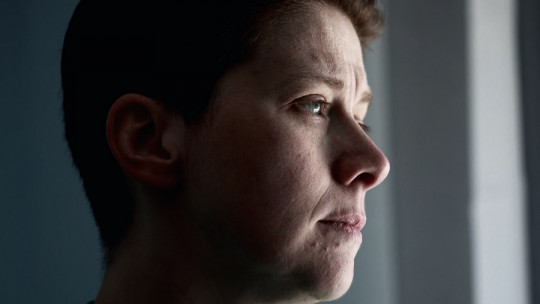
Anxiety is a mental and physical response that occurs when faced with situations that we interpret as dangerous.. It is a normal reaction that anyone can experience on some occasion, for example, when speaking in public, when we have an important appointment or before an exam.
This physical and mental sensation, coming from a primary emotion, fear, can provide us with help to escape from what we consider dangerous, or give us additional energy to successfully emerge from said dangerous situation.
Since the symptoms of anxiety are unpleasant, we can tend to see it as an enemy, instead of seeing it for what it is, a defense mechanism, an alarm that warns us and helps us in the face of danger. Therefore, the objective will not be to avoid or eliminate it, but rather to learn to listen to it and manage it.
Anxiety can become a “problem” when the symptoms are very severelast excessively long, are very frequent, appear in situations that really should not be interpreted as dangerous or stressful or, in general, if it limits our daily life, turning us into dysfunctional people, instead of functional.
How can we identify anxiety?
What we think, what we do or how our body reacts can be manifestations of anxiety. Thus, anxiety appears at a cognitive level, at a motor level or at a physiological level.
On a cognitive level, there are thoughts that appear in the mind automatically when we feel anxious. These thoughts tend to be irrational, such as: “I’m going to die”, “This is horrible”, “I’m not going to be able to bear it”, “I’m going to go crazy”, etc. The mind is warning us of a much greater danger than we actually have to face.
Regarding the behavioral level, when we suffer from anxiety we are likely to avoid things, for example, going out alone or talking to people. When we avoid the situation that generates anxiety, we immediately feel better; But in the long term, avoidance will generate an association between anxiety and what is avoided, making coping more difficult.
Furthermore, anxiety also can make us feel like we should do certain thingsFor example, repeatedly checking if all the doors in the house are closed or if all the furniture is free of dust. Other behaviors such as hypervigilance or talking quickly (even jumbled words) can also occur in people who suffer from anxiety.
Finally, at a physiological level, we can highlight numerous symptoms that arise as a form of prepare the body to face a suspected threat. They tend to be very unpleasant and, sometimes, they can appear without us identifying any reason. However, these symptoms are not dangerous nor will they harm us. For example: headache, palpitations or tachycardia, feeling of suffocation, rapid and shallow breathing, tightness in the chest, sweating in the extremities, tremors, blurred vision, dizziness, chills, dry mouth, tiredness, ringing in the ears , muscle tension, upset stomach, nausea, frequent urination, etc. Most people only experience some of these symptoms, not all.
Thus, we can begin to notice anxiety through thoughts, behavior or the body and the anxiety reaction in each of these areas influences the others. This keeps the body “on alert,” creating a vicious cycle that maintains anxiety.

Why does anxiety appear?
Today, we can say that there are numerous factors that can trigger anxiety. It can often start when we go through significant periods of stress.. For example: pressure at work, taking exams, loss of someone close, financial problems, lack of sleep or diagnosis of an illness.
When we feel stress, a response is launched that has been present since prehistory and that helped our ancestors survive. Our body releases adrenaline, preparing us to “escape” or “fight” the moment the threat appears.
In this way, a series of physical changes occur: muscles tense ready to flee or fight, heart beats faster to deliver blood to the brain and muscles (where it is needed most at that moment), breathing quickens to provide the necessary oxygen and thus generate sufficient energy, etc. Once the threat is overcome or disappears, this response fades, and a feeling of exhaustion may appear.
Taking the above into account, we can react in this way to a series of things that concern us. When we feel constantly overwhelmed by concerns that are significant to us, the body is constantly “on alert,” causing the symptoms of anxiety to appear.
It must be taken into account that there are people who have a greater predisposition to suffer from anxiety than others, such as those who have an anxious personality or who have had difficult experiences during their childhood, etc.
What is an anxiety attack and what can I do at that time?
An anxiety attack can be defined as the sudden onset of intense fear or intense discomfort that reaches its maximum expression within minutes and, during that time, symptoms may appear such as: palpitations, sweating, trembling, feeling of suffocation or suffocation, pain in the chest, nausea, dizziness, chills, tingling, derealization or depersonalization, fear of losing control or dying.
When a danger signal is perceived or anticipated, The brain sends messages to the Autonomous Nervous System (ANS). This system, as its name indicates, works autonomously, that is, without our will interceding. It has two branches: Sympathetic Nervous System (SNS) and Parasympathetic Nervous System (PNS). The SNS activates the fight or flight response and the PNS is responsible for returning the body to its normal state.
In this way, the activity of the SNS has a limit, which means that anxiety cannot continue forever or increase to levels that cause damage, since the PNS is a protective system that will take the body to a state of relaxation, preventing it from the SNS continues its course without control.
As we have said before, when we face danger, our body carries out a response that, in most cases, involves a very common symptom: hyperventilation. By breathing quickly, carbon dioxide decreases in the blood, altering its pH and, in turn, generating other symptoms such as dizziness, tingling, palpitations, etc., already mentioned.
Thus, It is important that, during an anxiety attack, we try to breathe slowly, inhaling little oxygen; let’s connect with our environment; Let us keep in mind that we are not going to die or suffer any damage, since the symptoms are unpleasant, but they will pass. We are not going to “go crazy” either.
Can I control anxiety?
I’m sorry to tell you that anxiety cannot be controlled, since if it were, it would be enough to make it not appear or we could quickly eliminate it from within us if it did.
But The fact that it cannot be controlled does not mean that it cannot be managed when it appears.. Carrying out good emotional management is synonymous with well-being.
In order to manage anxiety we need to know what it is and how it works, that is, take into account the previous points. In addition, we can learn and practice a series of techniques or tools that will help us cope with emotion in an adaptive way, for example, cognitive restructuring, problem solving or diaphragmatic breathing.
Author: Maribel Martín, Psychologist at Rapport Psychology Center








